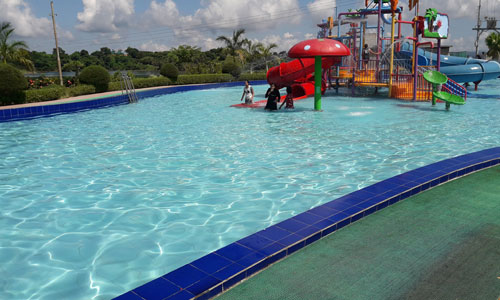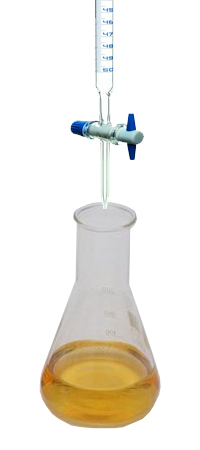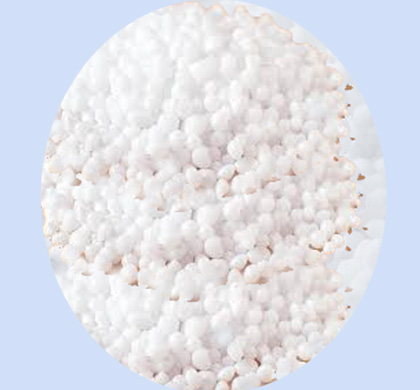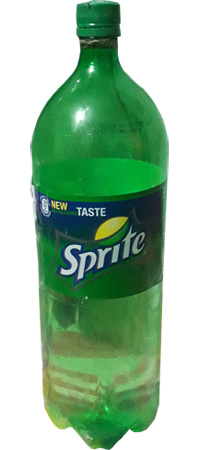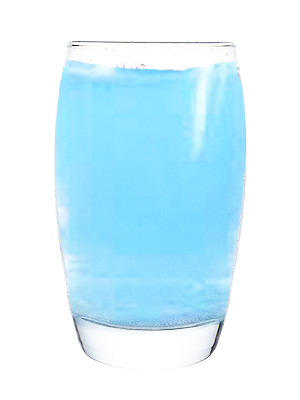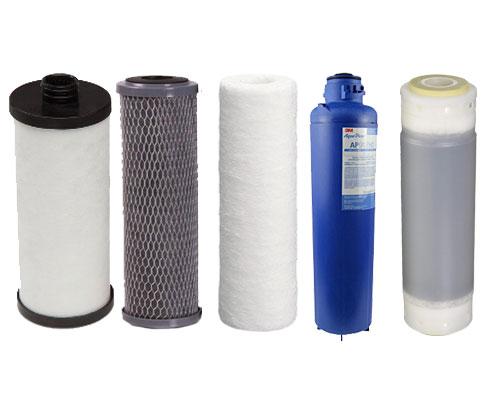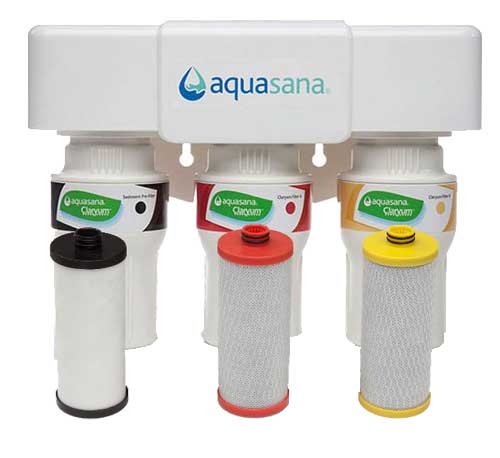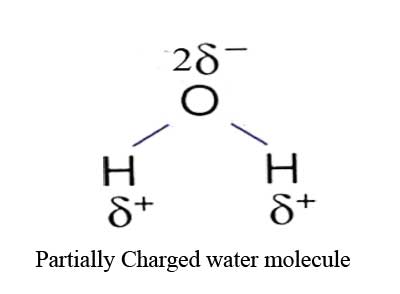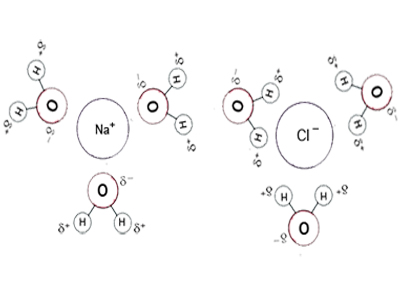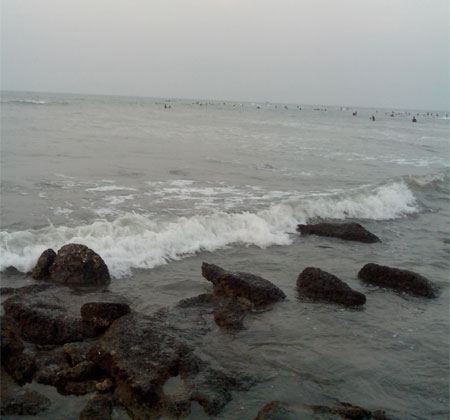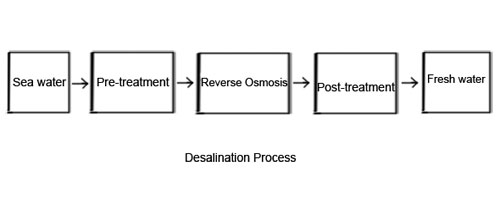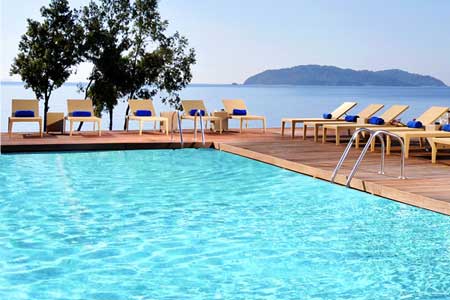The express water heavy metal whole house water filter is a three stage home water filtration system. It is one of the best POE (Point Of Entry) type whole house filtration systems which provide clean and safe water throughout our entire home for drinking, washing, and bathing. The local water of our city may have chlorine, arsenic, heavy metals, synthetic fluoride, herbicides, pesticides, and more. By using this unfiltered water is risk for our health and for our home equipment. This three stages filtration system named Sediment, KDF and Carbon Filter remove chlorine, iron, rust, lead, pesticides, mercury, dirt, sand, viruses, fungi, sulfur, insecticides, chloramine, silt, turbidity, aluminum, copper, Volatile Organic Chemicals (VOC), herbicides, cadmium, copper, hydrogen sulfate, nickel, chromium, cloudiness, and odors form water. Then you will get a better household experience overall. This filter does not waste any water and it does not need adding any chemicals. The following points will help you to buy the best whole house water filter system on the market.
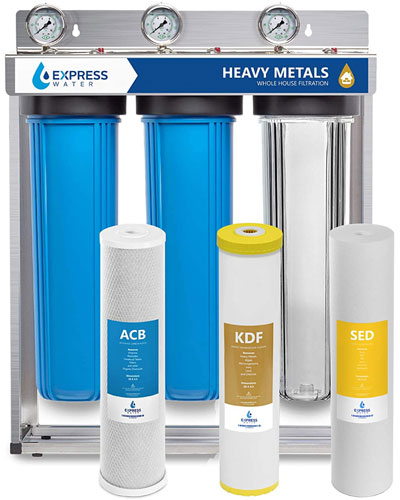
Types of whole house water Contaminants
In general, the most common type of contaminants in our tap water is fall into the categories of Sediments, Heavy Metals, Chemicals or VOCs, and Bacteria. The heavy metals can get into our water by naturally or plumbing system. Among the heavy metals, lead is the most common type of contaminant, but copper, arsenic, chromium, cadmium, Nickel, Mercury, Aluminum, Iron are the few other metals that could be contaminant in our tap water. Old pipe line, broken or cracked water line or tank system can also the sources of bacteria, microorganism, fungi, rust, silt, turbidity, and different bad odors. Further again the tap water or line water may also contaminant with chlorine, insecticides, herbicides, pesticides dirt, sand, chloramine, Volatile Organic Chemicals (VOC), cloudiness and fluoride.
What is the effect of the contaminant water
The contaminant water has various effects on our health and on our home equipment. With the heavy metal water system we may experience with staining on the floor, basin, toilet bowls, sinks, bathtubs as well as clothes. Chlorine water has a bad effect on the hair, nails and skin. The skin may be dried and the hair may be dull.
Construction and function of the express water heavy metal whole house water filter
The express water whole house filter is made with high quality and durable 100% food-grade ABS and PCE plastic materials. The system includes pressure gauges, easy release and 1 inch connections for easy adaptability and high flow. The housings are precision fitted to a durable stainless freestanding mount so that we can changes the filter with very easy. The Express Water Heavy Metal Whole House Water Filter has three stages named sediment, KDF and carbon block. Among them the first filter sediment housing is transparent, as result we can see the inside of the filter and know when it needs to be replaced. The 3 stages describe as below:
Stage 1: Sediment
Sediment is the first stage of the express water whole house water filter system. It is made with precision packed food-grade polypropylene microfiber. It has 4 distinct layers to catch the contaminants like sand, rust, and dirt up to 5 microns. The outer layers of this sediment catch the coarse contaminants and the inner layers catch finer particles.
Stage 2: KDF
Kinetic Degradation Fluxion (KDF) filter is the second stage of Whole House System. It is made with catalytic carbon and high purity ionically charged copper and zinc granules. So when the water flow between this filter then occurs a redox (oxidation-reduction) reaction and captures iron, lead, arsenic, mercury, aluminum, sulfur, algae, viruses, hydrogen sulfide, fungi, chlorine, chloramine and controls and inhibit growth of microorganism. This second stage is focused on capturing heavy metal contaminants. Finished with a thermal bonded cap and industrial sealed silicon ring makes it durable and reliable.
Stage 3: Carbon Block
Activated Carbon Block (ACB) is the third stage of the express water heavy metal whole house water filter. It is made with tight packed, laboratory vacuum heated carbon for high capacity filtration. It captures chlorine, Total Organic Carbon (TOC), pharmaceuticals, turbidity, pesticides, and chemicals causing bad tastes and odors. This stage focuses on taste and drink-ability of your water and removing chemicals. Finished with a thermal bonded cap and industrial sealed silicon ring to make sure it’s durable and reliable.
What does a whole house water filter do?
Whole house water filter systems are popular filtering solutions that are currently used throughout the country because they’re effective and produce high-quality water. It can provide clean and safe water for your family to drinking, washing, cooking and bathing. This three-stage whole house filtration system ensures that all harmful chemicals, dirt, and odors are carefully removed from tap water. Each stage of filtration is specifically designed to help your water be pure as possible when reaching the faucet.
How to find the best whole house water filter?
If you want to purchase a whole house filtration system, then you have to consider some factors. These factors include type of filter, micron filter, lifetime, flow rate, Certifications, Installation and maintenance.
Consider the Type of Filter
The filters that are found in the markets are not same type and same quality. At first, we have to consider which specific contaminants are present in the water, and then pick the filter which is effective for that water.
Filter Micron Size
The filter micron size indicates which particles they can remove. Lower micron size filter can remove most of the contaminants. This express water filter can removes the contaminants which particle size is 5 microns or above.
The lifetime of the filter and support
We should consider the filter that can last for a long period of time. The express water given 1 year warranty on all Express Water Systems and the company offers free lifetime support. But you have to change the cartridge after 6-12 month uses or after filter 100,000 gallons of water. The lifetime of filters will depend on the quality of water and number of family member. Usually, the lifetime of the filter cartridge for a four family member is one year. After that, you will need to replace them.
Flow Rate
The flow rate means the amount of water pressure delivered in all areas of the house. You need a system that will deliver fast and steady flow of water in all areas of your house. Generally, most of the household water system has a flow rate from 10 to 20 gallons per minute. The flow rate of express water is designed with 15 gallons water per minute which is great and we won’t notice any drop of pressure at the tap. We can also know the filter performance with the value of the three pressure gauges.
Installation and maintenance
Easy Installation and maintenance consider one of the qualities for any filter. The express water whole house water filter system designed with such a way that we can install it very quickly and easiest way; the entire unit can be installed in less than 2 hours. One the other hand, changing a filter cartridge takes minutes. You can change them easily without the help of a professional.
Certifications
We will find one or more symbols on the packaging of a product; it may be certification or award symbols. The certification like NSF and ANSI means that it was tested by the NSF and ANSI to comply with their rules and regulations. Certification for NSF or ANSI is a crucial factor in your filtration system. The express water whole house filter is NSF/ANSI certified.
Pros
- Heavy-duty, durable construction
- Simple installation and maintenance process
- Stainless steel housing for easier filter changes
- Removes most heavy metals from tap water
- Eliminating odors
- Clean, purified water is delivered to the whole house within seconds.
- Water pressure is a high, flow rate 15 GPM which is ideal for large houses
- Pressure gauges make it easy to see the state of your system
- A one-year warranty, Long filter life and lifetime support
- NSF/ANSI certified
Cons
- Replacement filters must be exact matches
- Parts, including filters, can be pricey
- No real installation “instructions” provided
- It does not suitable for hard water
Conclusion
The express water whole house water filter system is the right model which will better suit all your needs. They are not only well made, but also very effective and standards for fair price.

Frequently Asked Questions
The main points about the whole house filtration system are described in above. However some question may rise in some users. So among the most frequently asked questions about the water filtration systems are answered below.
Q: Does the whole house filter work with well water?
If the water comes from a private well instead of from the city’s water line, then it is also need filter. Generally, the well water is not 100% pure because the ground itself can be contaminated with dissolved salt like calcium and magnesium, bad odor, microorganism’s etc. Dissolved salt of calcium and magnesium means hard water. If the water is too hard then the filter is not suitable. In these cases you need another filter like reverse osmosis system. So be sure to check your water quality before choosing a system for well water.
Q: Will a whole house filter remove or reduce Fluoride?
No, the express water whole house water filter would not remove or reduce Fluoride.
Q: Do I need a separate storage tank for the system?
You do not need a separate storage tank for this system because it is an in-line filtration system.
Q: Will this system remove dissolved calcium and magnesium salt?
The express water whole house filter system does not remove dissolved calcium and magnesium salt. The water that contains dissolved calcium and magnesium salt are hard water. To reduce hardness you need another filter like reverse osmosis system.
Q: Will this kill bacteria like coliform?
No, the express water heavy metal whole house water filter does not kill bacteria like coliform. You will need a UV light to kill bacteria. Install the UV light after the filtration.
